Soviet BOPS for 2А46 family of guns
In the mid-fifties, the Moscow research institute-24 (now the Scientific-Research Machine-Building Institute) was appointed the head enterprise for the development of artillery ammunition of medium and large calibers. This organization is still engaged in the creation of tank ammunition, including BOPS. By the end of the decade, Soviet gunsmiths had formed the shape of an armor-piercing feathered sub-caliber projectile. In the future, all new ammunition of this class was designed in accordance with this scheme, and all the differences mainly consisted in the use of new materials, new technologies, etc. Due to the fact that the new tank gun 2А46 had a separate-cartridge loading, the designers of ammunition had to apply a rather original solution.
The shot was divided into two parts - the sleeve and the cylinder with the projectile itself. The sleeve and the cylinder are burned, usually made from cardboard, impregnated with an explosive. The sleeve has a metal pan on which the ignition means are mounted. The burning cylinder has no metal parts and is put on the armor-piercing core with a pallet. The sleeve and the cylinder are filled with a propelling charge. The type and amount of explosive depends on the specific type of shot. When firing, the cylinder and liner are completely burned, leaving only a small pallet of the last, which is removed outside the limits of the crew compartment.
The projectile of such ammunition is a metal rod of high elongation with tail in the tail section. Due to the relatively small caliber, it is possible to ensure high speed and low energy losses in flight, which gives BOPS the corresponding armor penetration indicators. Prior to leaving the barrel, the swept projectile is held in the correct position by special driving devices (also called a pallet), which are separated after passing through the muzzle and tail tail, whose span corresponds to the caliber of the barrel.
With the help of such a division of the shot into two parts, it was possible to ensure the use of projectiles with high performance in the existing loading mechanisms of tank guns. However, the separate-cartridge loading has long been the object of criticism. Because of the need to split the shot into two parts, it is necessary to limit the length of the swept projectile, which leads to a reduction in its ability to break through the armor.
One of the first Soviet BOPS, made according to the scheme described above, was the 3BBM-3 shot with the 3BM-9 projectile (hereinafter the designation of the swept ammunition itself is indicated; -3), which appeared in 10 year. The detachable cartridge ammunition with a feathered projectile caliber 1962 mm, equipped with a steel alloy core and five-plane empennage, was intended for use with the new tank gun 36А2. Ammunition weighing 46 kilogram left the barrel at a speed of 3,6 meters per second. At a distance of two kilometers at an encounter angle in 1800 ° (further data on normative penetrability under the same conditions will be given), the 60BM-3 projectile punched only 10 millimeters of armored steel. Such low characteristics were due to the applied core material: martensitic-aging steel did not allow for a dramatic increase in armor penetration.
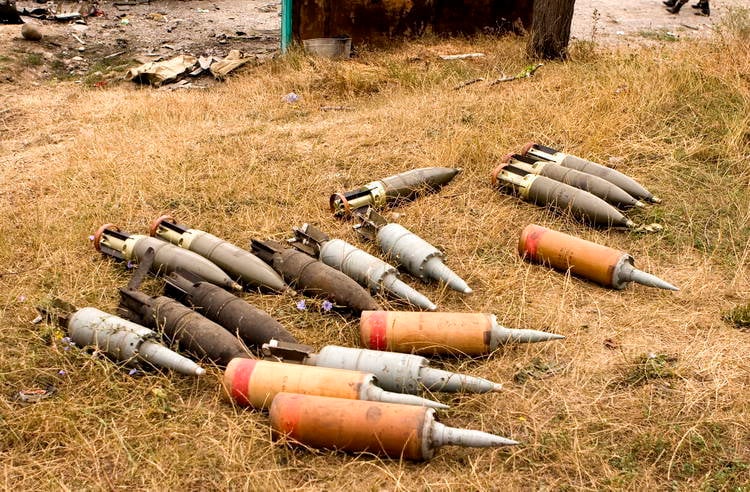
Due to the insufficient penetration characteristics of the 3BBM-3 shot, a new 3BBM-6 munition (3BM-12 projectile) was created in the mid-sixties. From his predecessor, he was distinguished by a new design of a feathered projectile. With similar dimensions and mass, the new projectile was equipped with a tungsten carbide core. Thanks to a new striking element, the penetrability of the 3BBM-6 shot has increased to 110 millimeters. At the same distance (2000 meters), but at an angle of 0 °, the 3BM-12 projectile could penetrate up to 280 mm of armor.
In 1972, the 3BBM-7 shot appeared with the 3BM-15 projectile. The level of technology of the late sixties and early seventies allowed the creation of ammunition capable of sending a projectile to the target at a speed of 1780 meters per second. The core of the projectile was made of tungsten carbide. The shell had a length of 548 mm and weighed a kilogram 3,9. Caliber remains the same - 36 mm. When testing this shot, sufficiently high penetrability characteristics were detected: the striking element punched up to 100-150 millimeters of homogeneous armor. BOPS 3BBM-7 has become one of the most common ammunition in its class. For many years, this projectile was delivered to countries that were armed with tanks of the T-72 family.
The next 3BBM-8 shot with the 3BM-17 projectile, also created in the early seventies, was a simplified version of the previous ammunition. It differs from 3BBM-7 using a steel alloy core and a new armor-piercing damper, which partially compensates for the absence of a core. All characteristics except the length remained the same: the armor-piercing projectile was longer by 10 millimeters. According to some sources, the 3BBM-8 shot was made only for deliveries to third countries.
[
In 1976, the arsenal of Soviet tank crews was supplemented with a new 3BBM-9 shot with a 3BM-22 projectile, created as part of the “Hairpin” theme. The main elements of the design of the new projectile in comparison with 3BM-17 have undergone minimal changes. At the same time, to increase the armor penetration, a new, larger-sized damper was used. The detail with a diameter of 37 millimeters and a length of 88 mm resulted in an increase in the mass of the entire shot. So, the 3BM-22 projectile without a pallet weighed about 4,5 a kilogram, the whole shot with a sleeve - 20,2 kg. Thanks to the use of the new massive damper, armor penetration increased to 200 mm. The 3BBM-9 shot was fired for several years and as a result became one of the most massive ammunition in the Soviet armored forces. A large number of 3BM-22 shells and cartridges for them are still stored in the warehouses of tank units.
All of the above BOPS Soviet production had several similar features. First of all, it is the size and placement of the core. The shell and the plumage of the projectile were made of alloys based on steel, and the cores were installed cores of harder materials. For the passage of the bore all the shells that can be attributed to the conditional first generation, were equipped with a detachable annular driving device of the expanding type. It consisted of three parts, separated from the projectile after exiting the barrel. In the late seventies, the designers of tank ammunition from THEM faced new challenges. Now it was necessary to create armor-piercing projectiles capable of striking enemy vehicles in a wide range of meeting angles, and in addition, having the ability to penetrate the prospective dynamic defense that existed at that time. Finally, it was necessary to take into account the constantly growing level of protection of foreign tanks.
In this connection, Soviet scientists had to study new alloys based on steel, tungsten and even depleted uranium. In addition, among the tasks that needed to be urgently addressed were issues of aerodynamic qualities of the projectile and increasing its initial velocity. Numerous studies have resulted in several BOPS projects at once, differing from each other in some constructive solutions, but using a number of common elements. For example, the conditional “second generation” of Soviet armor-piercing fired snapping shells was given to new so-called leading devices. clamping type. A pallet made of aluminum alloy and / or plastic made it possible to reduce the energy losses of the propellant charge, which had a beneficial effect on the characteristics of the projectile.
The 3BBM-11 shot with the 3BM-26 projectile (Nadezhda-R), put into service in the 1983 year, became a kind of transitional link between old and new tank ammunition. In its design used a large number of old developments, however, there were several innovations. Thus, the 4,8 projectile weighing a kilogram received a new armor-piercing damper of greater length, and the tungsten carbide core was moved from the head to the tail. This was done to reduce the likelihood of rebound. Previous projectiles, falling into oblique armored obstacles, sometimes did not pierce them at all or at least could not make a deep hole in the metal. It is worth noting that the armor penetration capability of the 3BM-26 projectile remained at the level of 3BM-22 - about 200 millimeters. Also, some changes have been a detachable pallet. In its design, made on the basis of the old leading devices, some developments were used for new projects.
The 3BBM-10 shot with the 3БМ-29 projectile, also known by the name of the Nadfil-2 project, was the first full-fledged representative of the new family of piercing projectiles in which the new solutions and ideas were fully used. New ammunition received the original leading device of a smaller mass, which was achieved through the use of aluminum. At the same time, the lightweight three-section pallet had a large area of contact with the shell of the projectile. The steel structure of the shell itself received updated stabilizers designed to improve aerodynamics. Also, this ammunition was equipped with a core of "material B" - an alloy based on depleted uranium. As a result of all the changes, the 4,85 kg projectile was able to leave the gun barrel at a speed of 1700 m / s and pierce up to 210 mm armor steel. The shot of the 3BBM-10 was put into service in the 1982 year.
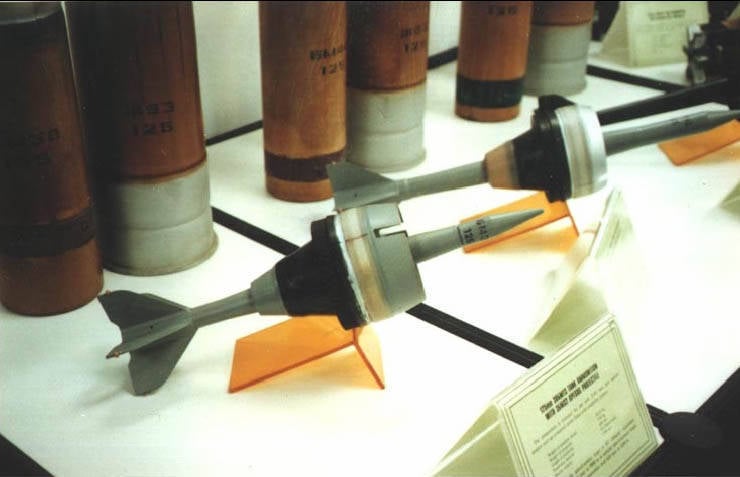
In 1985, the new army 3BBM-13 “Vant” with the 3BM-32 projectile was commissioned by the Soviet army. By design, a new armor-piercing projectile resembled previous developments in this area, and one of its characteristics resembled the early Soviet BOPS. The fact is that the shell of the projectile 3BM-32 was monolithic, made of the same material - uranium alloy. Due to the use of relatively heavy metal, to maintain the mass of the munition at the level of previous models (4,85 kg), it was necessary to reduce its length to 480 mm and diameter to 31 mm. With an initial flight speed of 1700 m / s, the Vant projectile is capable of penetrating up to 250 mm of armor. It is worth noting that at an angle of meeting 0 °, the penetrability at a distance of two kilometers increases to 560 mm. Despite its considerable age, the 3BBM-13 shot with the 3BM-32 projectile is still one of the most common tank ammunition in the Russian army.
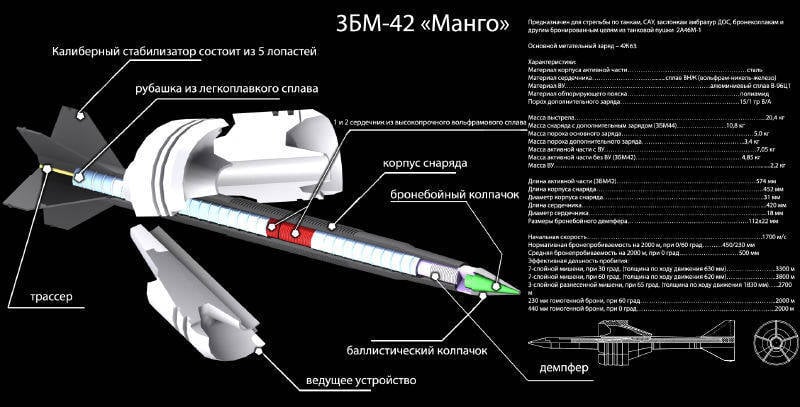
Shortly after “Vant” a new domestic BOPS 3BM-42, which is part of the Mango 3BBM-17 shot, appeared. Like the previous projectiles, it is equipped with detachable masters consisting of three sections. In this case, the ammunition with a length of 574 millimeter, a diameter of 30 mm and a mass of 4,85 kg has an original complex structure. The shell of the projectile is a hollow tube, inside which are armor-piercing damper and two cores of an alloy of tungsten, iron and nickel. The surfaces of the cores and the hull are separated by a special jacket made of low-melting metal, thanks to which the armor-piercing elements are firmly held in place during transportation, firing and in flight. When hitting the target, the shirt melts and the cores do not consume energy for separation from the body. At distances of about two kilometers, the 3BM-42 projectile at a meeting angle of 60 ° punches up to 230 mm of homogeneous armor. When normal, this parameter increases to 440 mm. Also in the public domain there is evidence of the effectiveness of BOPS "Mango" against combined armored forces. Thus, a seven-layer block (exact composition unknown) at an angle of encounter 60 ° (thickness of the block in the course of the projectile motion - 620 mm) makes its way from a distance of 3800 meters. The three-layer spaced target at the meeting angle 65 ° (total thickness 1830 mm) is surely struck at distances around 2700 meters.

The last armor-piercing feathered sabot, created before the collapse of the Soviet Union, was the Lead 3BM-46 (shot 3ВБМ-20). Its design traces both new and already mastered solutions at that time. The first thing to mention is a one-piece uranium alloy casing. An interesting feature of the 3BM-46 projectile was the fact that it has the maximum possible length allowed by the design of the automatic loading of domestic tanks - 640 mm. The mass of the projectile increased slightly, to 5,2 kilogram. For the first time in domestic practice, the Svinets projectile received a sub-caliber tail, providing higher flight characteristics. Because of this innovation, designers had to solve one additional problem. In previous shots with BOPS, the projectile in the barrel bore was centered with the help of leading devices in its central part and tail in the tail section. Due to the reduction in the span of the “Lead” plumage, he received a new detachable pallet having additional supports in the rear. Thus, when fired, the sub-caliber projectile of this model does not come into contact with the surface of the bore. Under the conditions described above, BOPS 3BM-46 with an initial speed of 1650 m / s punches up to 300 millimeters of homogeneous armor.
After the collapse of the Soviet Union, NIMI continued to develop new armor-piercing pierced piercing shells. In recent years, a modernized version of the 3BM-46 projectile with the name “Lead-2” and the “Slate” ammunition family have appeared. Unfortunately, due to a number of problems of past years, Russian tankers still have to use old ammunition created in Soviet times. A number of new developments, in turn, remain unclaimed by the army and have not yet entered mass production.
On the materials of the sites:
http://vadimvswar.narod.ru/
http://btvt.narod.ru/
http://russianarms.mybb.ru/
http://andrei-bt.livejournal.com/
http://armor.kiev.ua/
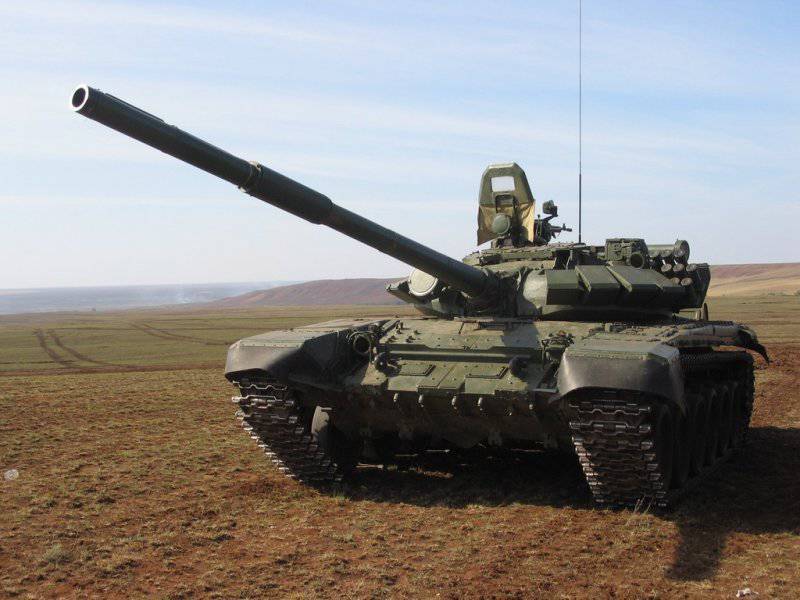
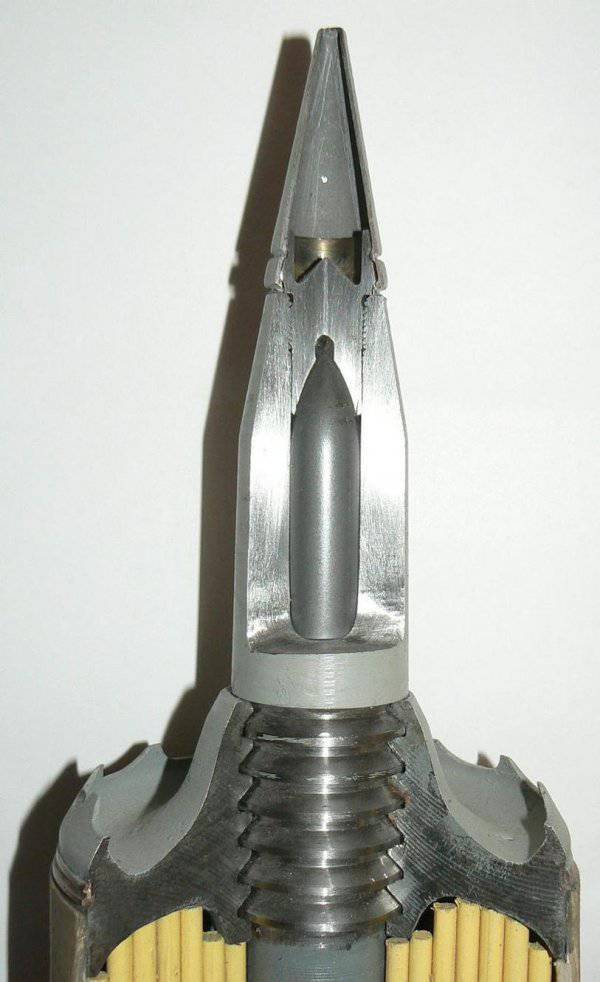
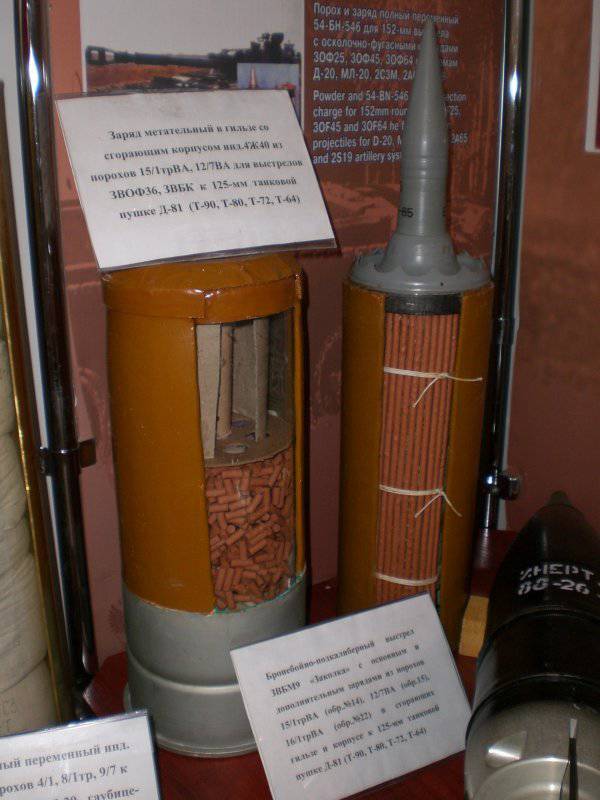
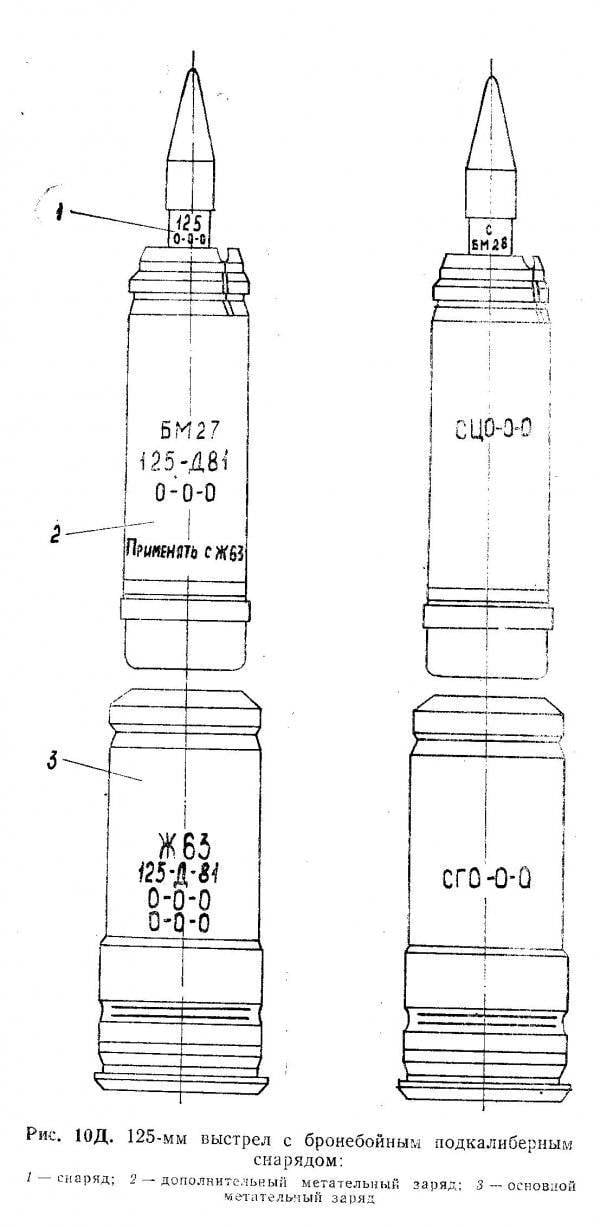
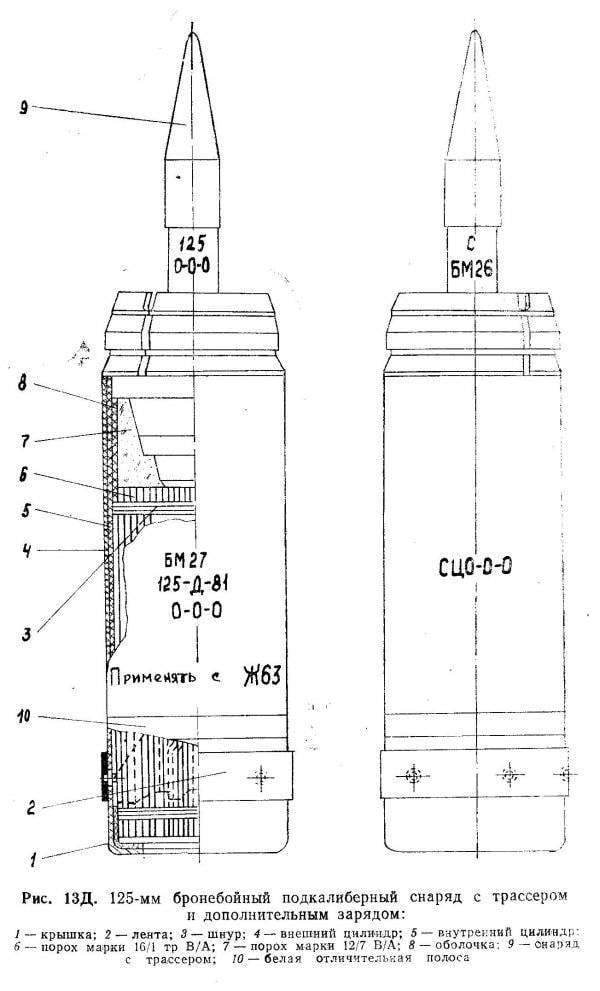
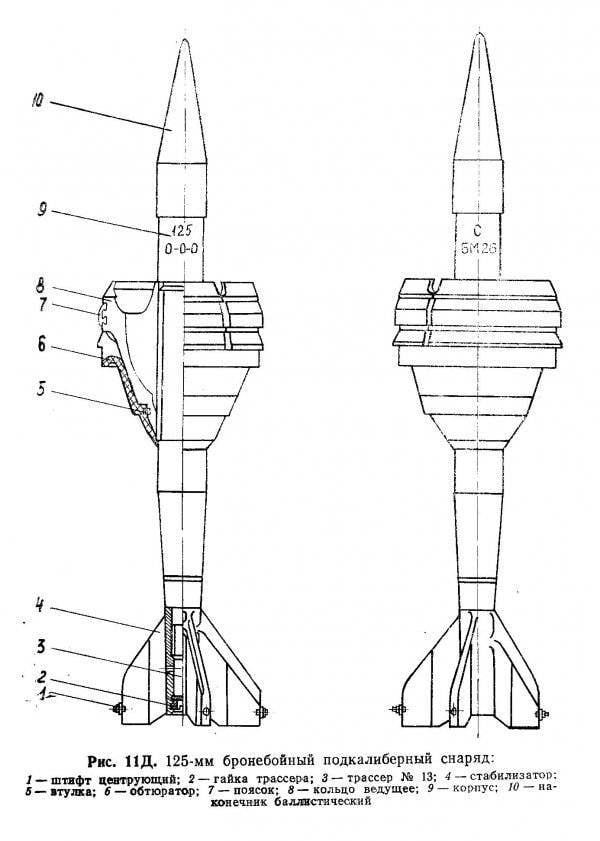
Information